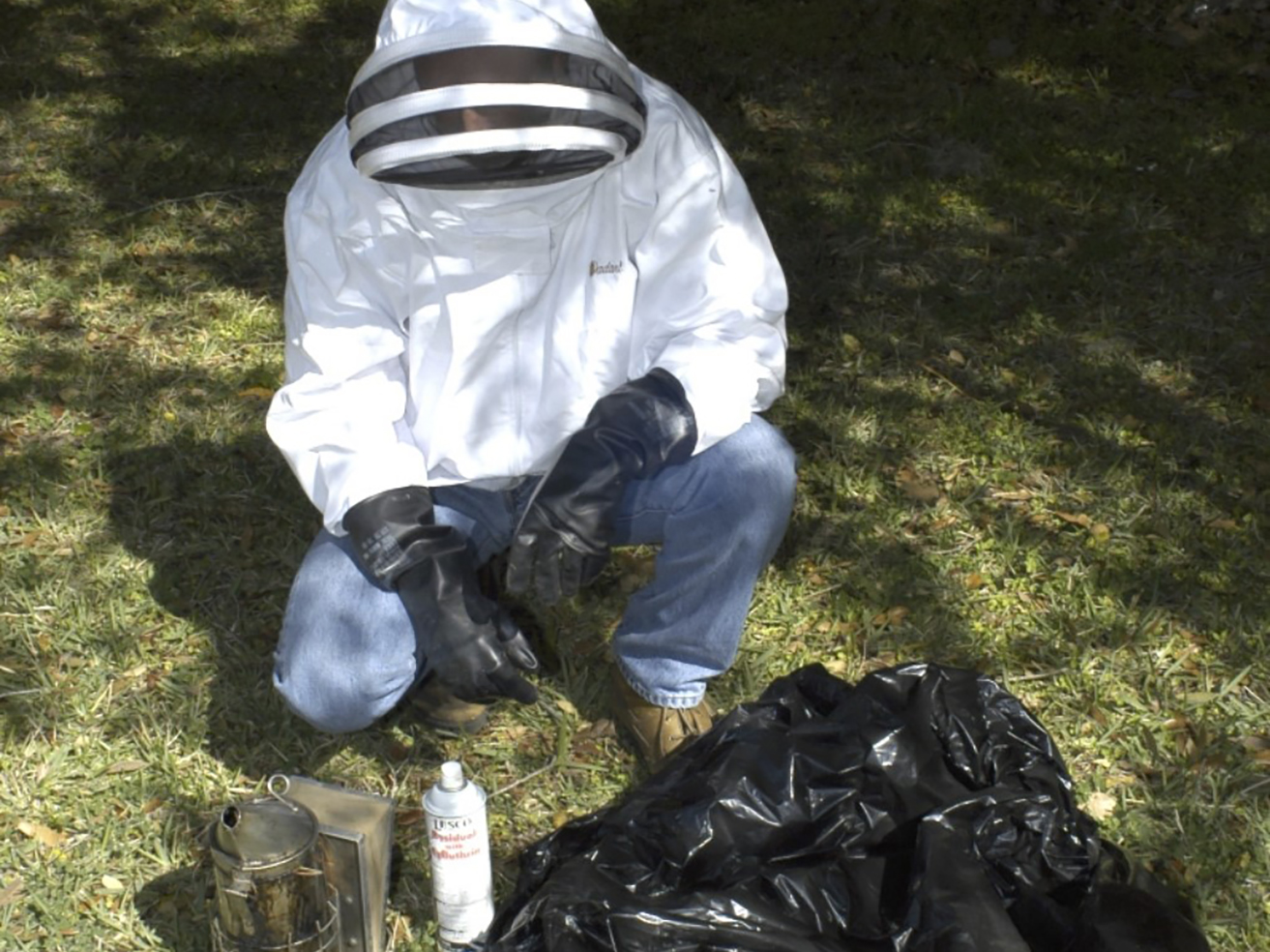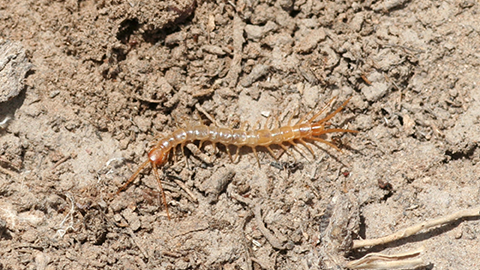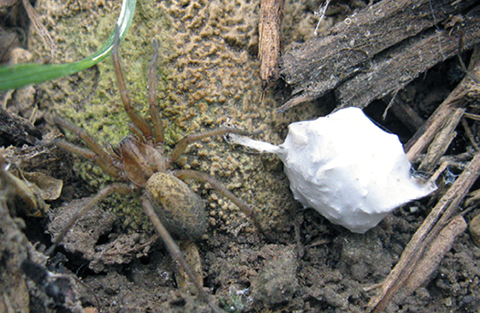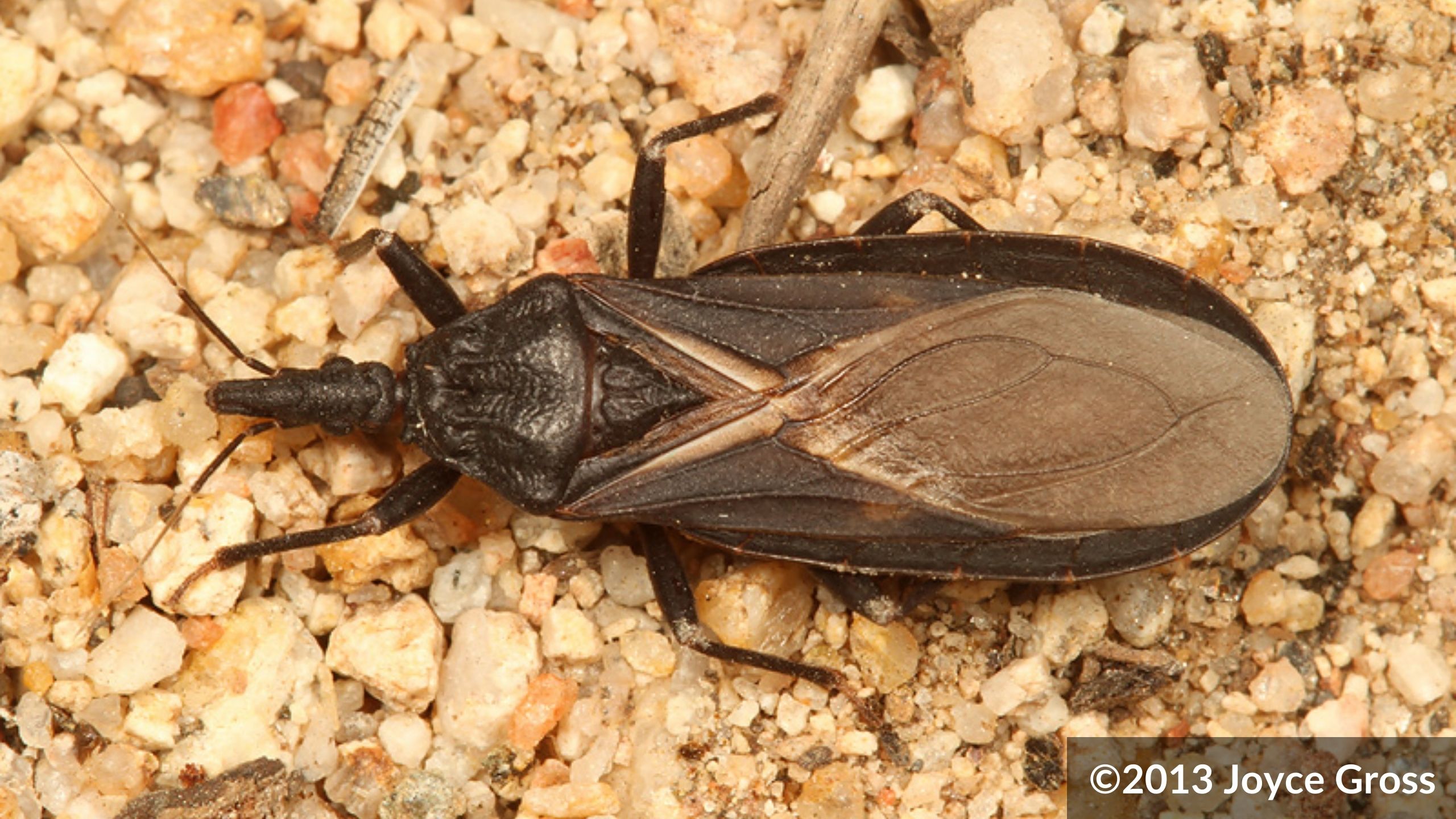Africanized Honey Bees
November 2010
Erin W. Hodgson, Extension Entomology Specialist (No longer at USU) • Cory A. Stanley, CAPS Coordinator • Alan H. Roe, Insect Diagnostician (No longer at USU) • Danielle Downey, Entomologist, State Apiarist
Do You Know?


- Africanized honey bees, sometimes called “killer bees,” were detected in Utah for the first time in 2008.
- These bees are more aggressive and will defend the nest in greater numbers compared to domesticated honey bees in the United States; their sting is not more painful or venomous than other honey bees.
- Although Africanized honey bees are feared by the public, very few people are actually attacked each year.
African honey bees (Apis mellifera scutellata) are native to sub-Saharan Africa and were introduced in the Americas to improve honey production in the tropics. These African honey bees were accidentally released and began to interbreed with European honey bees (Apis mellifera ligustica), the most common subspecies used for pollination and honey production in the United States (Fig. 1). As a result, the hybrid offspring are called “Africanized” because of their shared characteristics. Africanized honey bees are about the same size, shape and color as European honey bees (Fig. 2), and a genetic analysis must be used to distinguish one from the other.
Distribution And Spread
African bees were accidentally released in Brazil in 1957, and invaded European honey bee habitat. The hybridized offspring quickly spread and became established throughout South and Central America.
At the peak of their northern expansion into Central and North America, they spread at a rate of almost 1 mile per day. In 1990, Africanized honey bees were detected in Texas; now they are established in 12 states.
Africanized honey bees were detected in Utah for the first time in August 2008. Several feral and private beekeeping colonies have been genetically tested and confirmed in Iron, Kane, San Juan, and Washington counties.
The Utah Department of Agriculture and Food is the regulatory agency that surveys for Africanized honey bees and other potentially invasive species. UDAF has been surveying for Africanized honey bees since the 1990s and they will continue to monitor for new colonies in Utah.
Life Cycle

Honey bees go through complete metamorphosis (egg, larva, pupa, adult) and have a caste system. A colony typically consists of 20,000 to 90,000 members. In general, honey bees are hairy and robust insects with brown and yellow bands. Adults have two large compound eyes, elbowed antennae and two pairs of transparent wings (Figs. 1-2).
Queens are fertile females that generate eggs for the colony. They are larger than other members (16-20 mm) and can lay about 2,000 eggs per day each spring. Queens will continue to deposit eggs for about 2 to 7 years, although beekeepers may replace the queen every 2 to 3 years to optimize colony growth and honey production. Eggs destined to be future queens are put into “queen cups” (Fig. 3) that receive royal jelly.
Drones are fertile males intermediate in size. They mate with virgin queens during nuptial flights. A queen may mate with 12 to 15 drones before starting a new colony. Workers are sterile females and the smallest members of the colony (10-12 mm).
Workers have many different tasks depending on their age in days:
- 1-2: clean wax cells so the queen can lay eggs.
- 3-11: nurse bees feed jelly to young larvae and royal jelly to queen larvae; and feed nectar and pollen to the older larvae, drones and the queen.
- 12-17: build and repair wax cells in the comb; also cap pupae, store pollen, seal honey, use propolis to seal crevices, remove dead/diseased members; and cool the colony by fanning near the edge.
- 18-21: guard the colony from potential threats.
- 22-42: forage for nectar, pollen, water and propolis.
Description

Africanized honey bees cannot be distinguished from our domesticated European honey bees because they are a genetic hybrid between African and European subspecies. Some experts can use size and color variation differences, called morphometrics, for a preliminary identification (Figs. 2, 4). To be certain, a genetic (DNA) analysis is necessary to confirm the identity of Africanized honey bees.
Medical Importance

Honey bee workers inject an apitoxin through the sting, which is a modified ovipositor. Unlike social wasps (e.g., yellowjackets) that are capable of multiple stings with a smooth sting, honey bees leave a barbed sting in the skin of mammals and birds and die afterwards (Fig. 5). Honey bee stings release pheromones that prompt other nearby bees to attack. This is potentially dangerous if Africanized honey bees are in the colony.
The first step is to remove the sting from the skin as fast as possible to prevent further envenomation (a typical sting contains 5 to 50 micrograms of fluid). The sting area will be sore for a few hours, and swelling and itching may persist for 7 to 10 days. The area should not be scratched as it will only prolong the healing and could lead to a secondary infection. If a reaction persists, seek a doctor’s advice.
For people who are allergic to apitoxin, a sting may trigger a dangerous anaphylactic reaction that is potentially deadly. People known to be highly allergic should carry a self-injectable Epipen to prevent anaphylactic shock.
Why Care About Africanized Honey Bees?

Africanized honey bees are naturally more defensive and aggressive than European honey bees. Africanized honey bee drones mate with European queens, producing a more competitive and aggressive hybrid (Fig. 6). They can spread quickly and begin to dominate established hives or start a colony in a small cavity. Although Africanized bees are not visually distinguishable from European honey bees, there are a few behaviors that may signal a hybrid colony:
- Africanized honey bees produce more drones and their colonies grow faster than European honey bees.
- Adults tend to swarm more frequently and are more apt to completely abandon the hive if disturbed. For example, European honey bees swarm 1 to 3 times per year, while Africanized honey bees may produce 10 or more smaller swarms per year. It is important to note swarms from both subspecies are typically docile until they build a nest.
- Africanized honey bees are more likely to nest in small locations, like water meter boxes, cement blocks, old tires and grills. Colonies are more likely to nest underground and migrate for food.
- The colony dedicates more members to “guard” the nest and deploys greater numbers for defense when threatened. For example, a European honey bee colony may send out 10 soldiers to defend against a potential intruder, while Africanized honey bees may send out more than 1,000 soldiers.
- Africanized honey bees cannot survive long periods of forage deprivation because they do not store honey like European honey bees. Therefore they are not predicted to spread to areas with harsh winter conditions (Fig. 8).


In Case Of Bee Attack
Africanized honey bee stings are not more painful or venomous than European honey bee stings; but the sheer number of potential stings from an aggressive colony can be of medical concern. Children, the elderly, and those with disabilities are at the highest risk of suffering multiple stings because of their inability to escape an attack quickly. Leave the area immediately and seek shelter in a secure vehicle or “bee proof” building. If you are in an area that you cannot escape, cover your head and run away from the bees. Keep moving away from the bees until they stop stinging – this may be as far as ¼ mile. Do not hide under porches or other exposed areas to get away from stinging bees. Do not try to escape by jumping into a swimming pool because the bees will hover above the water longer than you can hold your breath.
Bee Management

It is important to remember bees are essential in the environment because they are pollinators (Fig. 7). The adults feed on nectar and pollen, and are therefore attracted to fruits, vegetables and other ornamentals in the landscape. For those people who are sensitive to bee stings, avoid flowering plants next to the property. Bees are especially defensive to dark clothing, so wearing light colors may help discourage stinging. Killing bees is rarely justified and not recommended. Occasionally, European honey bees will build wax combs in wall voids, on trees or other structures. Moving feral bee colonies or swarms is not an easy task and requires experience handling bees. Many beekeepers and pest control professionals wear protective clothing to prevent multiple stings, including: full bee suit, boots, gloves and a bee veil (Figs. 9-10). Suspected Africanized honey bee colonies should be destroyed by a pest control professional to prevent the spread and establishment of aggressive bees hybridizing with docile colonies.
Other Concerns
Are homeowners allowed to keep honey bees?
Depending on the local regulations, most people are able to keep honey bees on their property. Utah Department of Agriculture and Food requires all beekeepers to register for a license.
What should you do if you find swarms on your property?
Most bees and wasps are not aggressive unless they are disturbed. Honey bees are beneficial pollinators and most social wasps are predatory of other insects. If you want to remove them from your yard, it is best to contact a pest control professional.
What is Utah doing to protect honey bees in Utah?
The Utah Department of Agriculture and Food is working with the Utah Beekeepers Association to spread the important message of maintaining healthy honey bee colonies in Utah. Inspections of commercial honey bees and feral populations will also help monitor and protect bee populations in the future.









